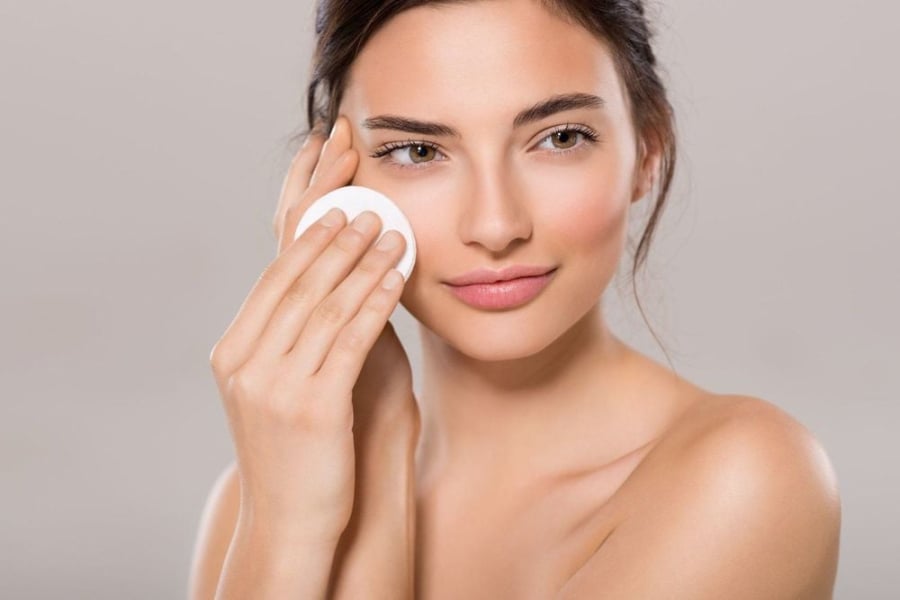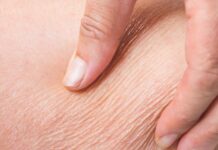Oily skin is predominantly caused by overactive sebaceous glands, producing excess oil beyond what is necessary. Sebum plays a crucial role in protecting the skin by maintaining moisture and preventing bacterial growth. However, when this balance is disrupted, excess oil leads to a shiny complexion and acne-prone skin. Factors such as genetics, hormonal imbalances, a high-sugar diet, prolonged stress, and a humid climate can contribute to increased sebum production. Additionally, improper skin care practices and unsuitable cosmetics can clog pores, resulting in acne and skin inflammation.
Daily Cleansing
The most important step in controlling oil production is proper cleansing. Our skin is exposed to dirt, pollution, bacteria, and makeup daily. Without proper cleansing, these elements combine with sebum, leading to clogged pores and acne breakouts. Removing your makeup is essential, even if you don’t wear any, as sunscreen and environmental grime can still accumulate on the skin. Following this with a gentle face wash will ensure the removal of excess oil, leaving your skin feeling refreshed and less oily.

Exfoliate Regularly
In addition to daily cleansing, exfoliation is a crucial step in the skincare routine for oily skin. Built-up dead skin cells can trap excess oil, making pores appear larger and more prone to acne. By removing this layer of dead skin, your complexion will become clearer, smoother, and more receptive to absorbing nutrients. However, it’s important not to over-exfoliate; aim for 1–2 times per week to avoid irritation and maintain the skin’s natural moisture balance.
Choose a Suitable Cleanser
Oily skin often coincides with enlarged pores and acne breakouts, so choosing the right cleanser is vital. Opt for gentle cleansers that effectively control oil and provide deep pore cleansing to reduce the risk of clogging. Using a harsh product can strip the skin of its natural oils, prompting the sebaceous glands to produce even more sebum. Therefore, balance is key: aim for a thorough cleanse without compromising the skin’s protective oil barrier.
Use a Toner for Balance
After cleansing, the skin’s natural pH balance is often disrupted, leading to dryness or irritation. A toner acts as a “bridge,” soothing and lightly hydrating the skin while preparing it for subsequent skincare steps. For oily skin, toners also help tighten pores, refine the skin’s texture, and reduce shine. However, it’s crucial to select a gentle, alcohol-free toner to avoid dryness and irritation, which can stimulate excess sebum production.

Moisturize – An Essential Step
Contrary to popular belief, moisturizing is crucial for oily skin. When the skin lacks moisture, sebaceous glands produce more sebum to compensate, exacerbating the problem. A lightweight, quick-absorbing moisturizer that won’t clog pores will help maintain soft, supple skin while regulating oil production and restoring balance. Additionally, properly hydrated skin will hold makeup better, ensuring a more natural and long-lasting finish throughout the day.
Caring for oily skin goes beyond merely managing shine; it’s about maintaining healthy, clean, and balanced skin. From proper cleansing and exfoliation to choosing gentle cleansers, incorporating toners, and consistent moisturizing – each step is essential to living in harmony with your oily skin. Instead of viewing it as a flaw, embrace your oily skin as an advantage, as it tends to age more slowly. With the right care, you can achieve a bright, smooth, and confident complexion.
The Ultimate Guide to Choosing the Right Toner for Oily, Acne-Prone Skin
Choosing the right toner is a crucial step in achieving clear, healthy skin. A well-formulated toner can help to balance and purify your complexion, offering a vital step in your long-term acne treatment regimen. The right toner will not only provide immediate benefits of a refreshed, mattified appearance but will also serve as a critical foundation in your journey towards a blemish-free complexion.




































